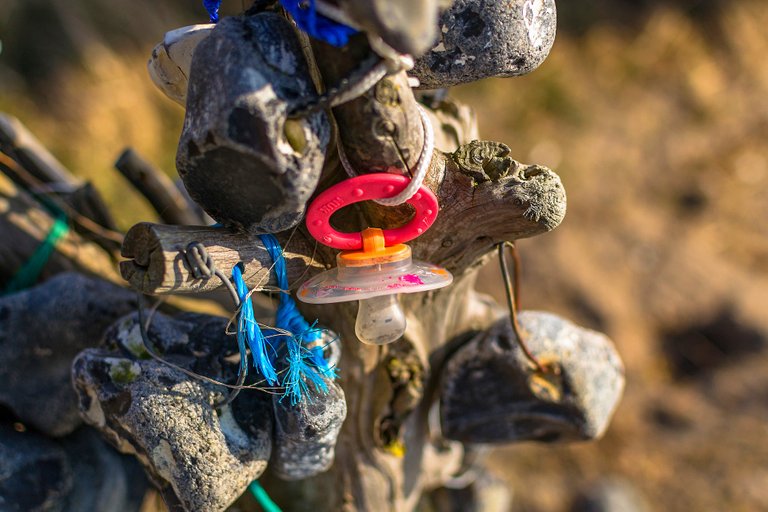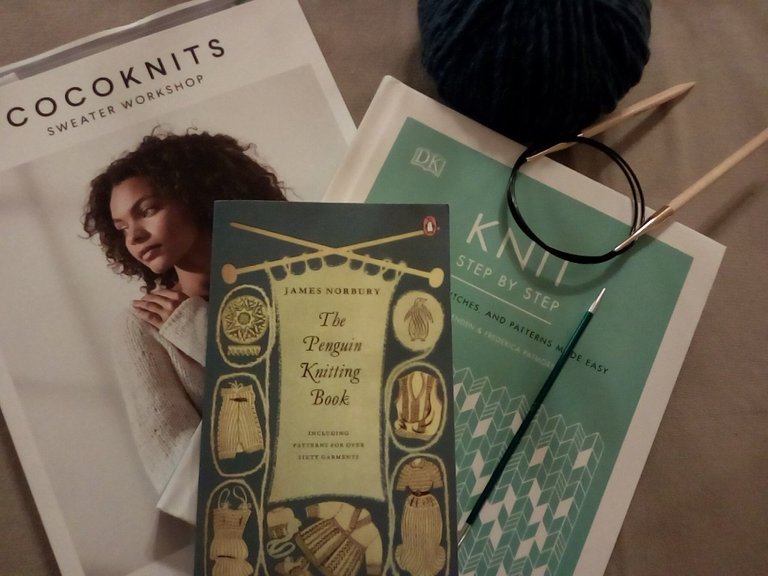
I remember learning to knit. It was before I was seven.
Back in primary school, on Friday afternoons after lunchtime, it was free play. You could dress up, play in the Wendy House, roll out plasticine, crayon and play games. Sometimes, usually after Christmas, or if you had had a birthday, you could bring in a toy from home.
One afternoon, two girls further down the row of desks to me, had some knitting. Two needles and some wool, child-size. They were the centre of attention with this new thing that they knew how to do. Everyone was fascinated: how did it work? I remember the two girls, smiling and flushed, explaining how the two needles worked together with the wool to create a scarf. It was magic or sorcery, one of the two.
I was too far down the row to hear properly, but I watched what they were doing. Back home, I found some needles and wool from somewhere and was sitting trying to replicate what I had seen, winding the wool around the needles and moving them backwards and forwards. How did you get it to grow? It's funny how your memory works: I don't remember where those needles and wool came from, did my mum or my aunt next door give them to me?
My dad, usually to be found sitting in a too small arm-chair, his long legs extended, reading one newspaper or another, or a book, noticed me playing and not getting anywhere and asked me what I was doing. Again, a memory lapse, because I don't remember the conversation and he would have needed to cast on, but then he was explaining how to hold the needles and make a stitch and then guiding my hands.
I don't know how many we did, I don't know how long I continued on my own after that, what I made or what happened to it, but from then, I could always knit. And purl. And cast on and off. I don't know who taught me those things, maybe my aunt next door, as my dad had retired back behind his newspaper. But somehow, I knew about stocking stitch and garter stitch and ribbing and what it was for.
Later, in the Junior Common Room, with its kettle and private toilet (sixth formers studying for exams no longer needed to go to the toilet block on the ground floor), in the febrile atmosphere of those final exams, determining which university you went to, or whether you went to a university at all, someone was knitting a hot water bottle cover. In the stress and din of talking about the exam you had just done or the one you were waiting for, I had a turn of the knitting.
It was pink, a stockinette pattern with a little motive every few stitches, maybe a purl stitch among the knit stitches, I don't remember, but I do remember taking the needles and yarn, with the care and tenderness you would use for taking a new-born, and starting to knit. My fingers and hands knew what to do, the stitches forming and looping and leaving the needles, creating row after row. I remember the din receding and the sensuous pleasure of yarn moving across my skin, featherlight, barely touching, and the deep satisfying dopamine hit of the rhythm of repeating tiny movements over and over. I was surprised, when I handed the knitting back, at the evenness of the fabric I had created, and the distinction between the knitting I had just done and the person before me.
I wonder now what happened during the intervening years (and since, because it was years before I took up knitting again) between my early attraction and learning the skills, and the gap, and then finding, maybe a decade later, that I was a competent knitter and experiencing the deep physical and psychological involvement of knitting. Nowadays, I understand that experience as flow.
The adult women around me, my mum, aunt, both grandmothers, knitted things. My grandmothers kept the whole of my family, and probably their other grandchildren too, in school cardigans and jumpers. My aunt knitted my long school scarf of acrylic so it didn't irritate my skin, and the woollen gloves with long ribbed wrists for my first winters at the big school, when I left the house when it was dark and travelled to a different neighbourhood on the bus.
My mum knitted tiny vests in soft pure wool and later attached satin ribbons to tie them, for each new baby that came. They had short sleeves and opened at the front with a crossover v-neck so you didn't have to try and put them over the baby's head in those early newborn days. Each little set for each baby: vests, bootees, tiny cardigans, tiny hats, shawls, and long nightdresses made from flannelette cotton. By the time my brother, the youngest, arrived, things had changed. Now you could buy soft cotton vests with overlapped shoulders so the neck could easily be extended to slip gently over a baby's head. There was no more need for tiny vests, knitted in the evenings, when the children were in bed.

With mass production, and school clothes available in local chain stores at a much lower cost, the jumpers and scarves and gloves and pixie hats were no longer needed either. Knitting moved from an affordable, necessary part of every day to a more expensive than shop bought, time consuming luxury. An impatient teenager with limited funds, I moved to dressmaking, producing clothes in an afternoon from fabric excavated from my aunt's stores or from the depths of my mum's old oak chest, bought when she was a teenager.
Kaffe Fassett came and went (and is still here). His painterly creations didn't speak to me. I couldn't imagine spending the time and the money. I fell into Textiles - fabric art, embroidery and printing - and spent a miserable three years wishing I wasn't there. I couldn't find the thing that moved me, that had captured my attention.
Knitting was considered a hobby, unfashionable in spite of Kaffe, and too low-brow for artistic and academic study, its cultural and economic history ignored (England became wealthy on the wool trade in the Middle Ages, its wool and knitters considered among the finest, trading with Scandinavia and mainland Europe through Antwerp. We still have green roads and drives - wide stretches of grass where flocks were driven - walked - from the pastures to the coast for transport).
Occasionally, something called to me: rich, rhythmic markings, or steel cables, plied in giant coils at the edges of bridges, giant balls of sisal and sea-grass in a shop in Chelsea, along the King's Road, but I didn't know what they meant or how to capture them in some creative intent.
Earning a living, having relationships, raising children, filled in all the spaces, encroaching and taking over, until one day, tiring of the tediousness that social media had become with everything curated and presented by an unknown, unseen, algorithmic hand, I turned away and said, "That is not what I meant at all./That is not it, at all."
Then began my knitting adventure.


Three things newbies should do in their first week and, for most things, forever afterwards!
